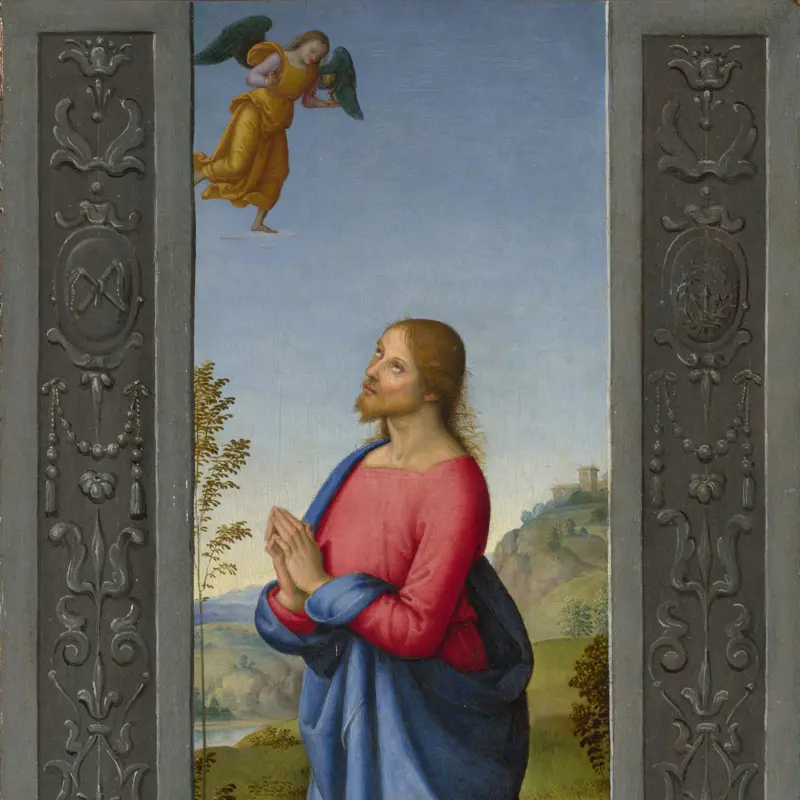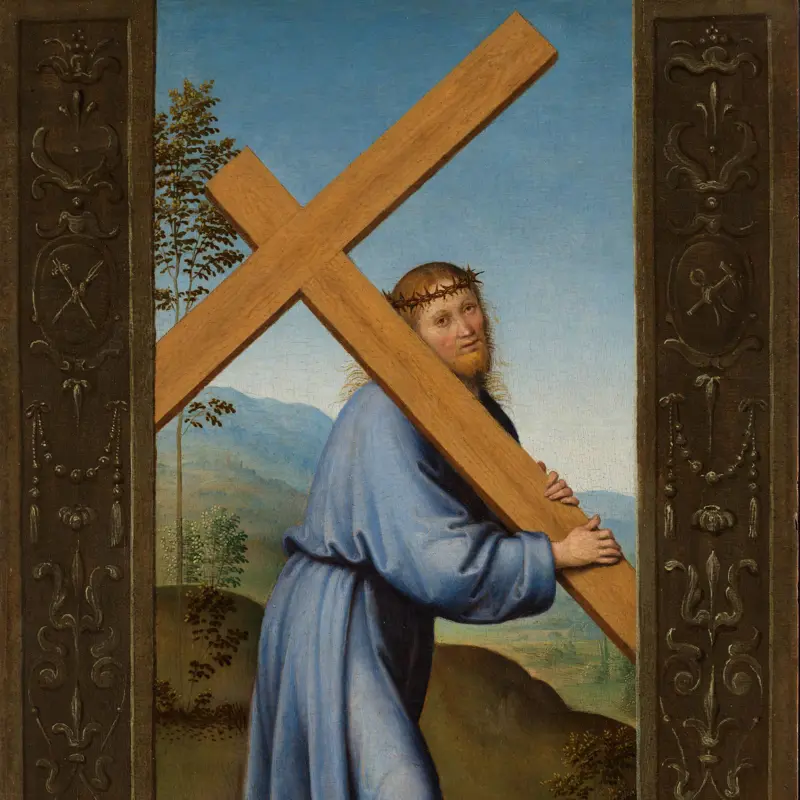Lo Spagna, 'Christ carrying the Cross', perhaps 1500-5
About the work
Overview
Christ Carrying the Cross is a painting dating from the beginning of Lo Spagna’s professional maturity as an artist. Bent under the weight of the large wooden cross, Christ looks towards the viewer as he makes his way along the road to Calvary. Behind him, a raised area of ground falls away to reveal a hilly Umbrian landscape. Lo Spagna has stripped away the usual narrative elements of the scene. Christ appears alone, as he journeys towards death.
In Christ Carrying the Cross Lo Spagna has placed the lone figure of Christ at the front of the picture plane to produce an iconic image, creating a direct and intimate connection with the viewer. Representations of Christ on the way to Calvary were very popular around1500 in Italy, where the influence of the Devotio moderna (‘Modern Devotion’) movement, which emphasised the need for medieval Christians to meditate on Christ’s suffering, spurred demand for cult images of the Passion.
Key facts
Details
- Full title
- Christ carrying the Cross
- Artist
- Lo Spagna
- Artist dates
- active 1504; died 1528
- Part of the series
- Scenes from the Passion of Christ
- Date made
- perhaps 1500-5
- Medium and support
- oil on wood
- Dimensions
- 33.8 × 24.4 cm
- Acquisition credit
- Accepted by HM Government in lieu of Inheritance Tax from the Estate of The Rt Hon the Countess of Sutherland and allocated to the National Gallery, 2022
- Inventory number
- NG6693
- Location
- Room 61
- Image copyright
- Dunrobin Castle Collection
- Collection
- Main Collection
Provenance
Additional information
Text extracted from the National Gallery’s Annual Report, ‘The National Gallery: Review of the Year, April 2021 – March 2022’.
Bibliography
-
2022National Gallery, The National Gallery: Review of the Year, April 2021 - March 2022, London 2022
About this record
If you know more about this work or have spotted an error, please contact us. Please note that exhibition histories are listed from 2009 onwards. Bibliographies may not be complete; more comprehensive information is available in the National Gallery Library.
Images
About the series: Scenes from the Passion of Christ

Overview
These two small paintings probably once formed the wings of a portable altarpiece. They show different episodes from the Passion (Christ’s torture and crucifixion). In one, Christ kneels in prayer in the Garden of Gethsemane, just before he is arrested (Matthew 26: 39–42. In the other, he carries the cross on the way to be crucified, as described in all four Gospels.
The sweet, light style of these pictures links them to Pietro Perugino, who in the early sixteenth century was the most admired and commercial artist in central Italy. They were painted by Lo Spagna who, after Raphael, was the most talented of Perugino’s associates. A nineteenth-century source suggest they were made for Cardinal Giovanni de’ Medici, who became Pope Leo X.



